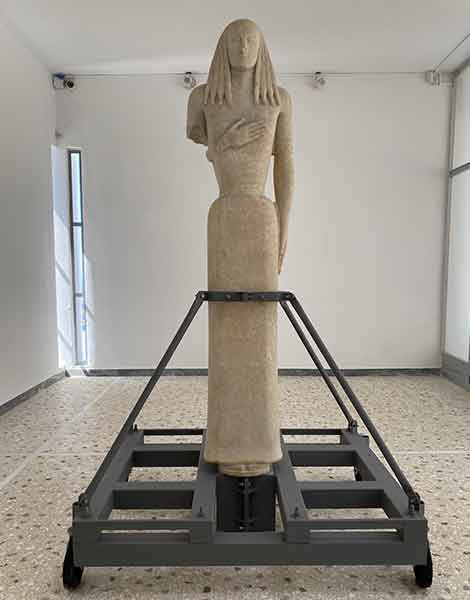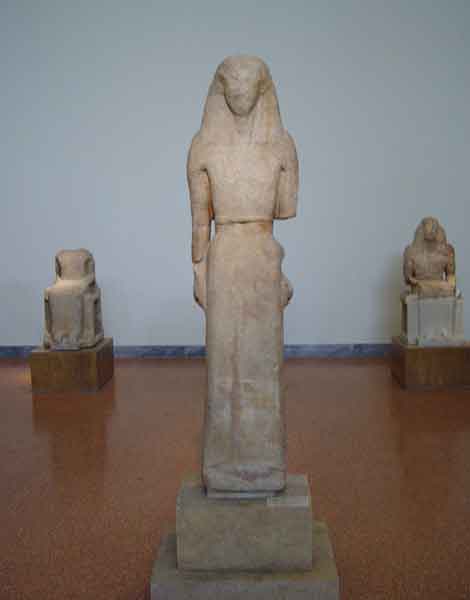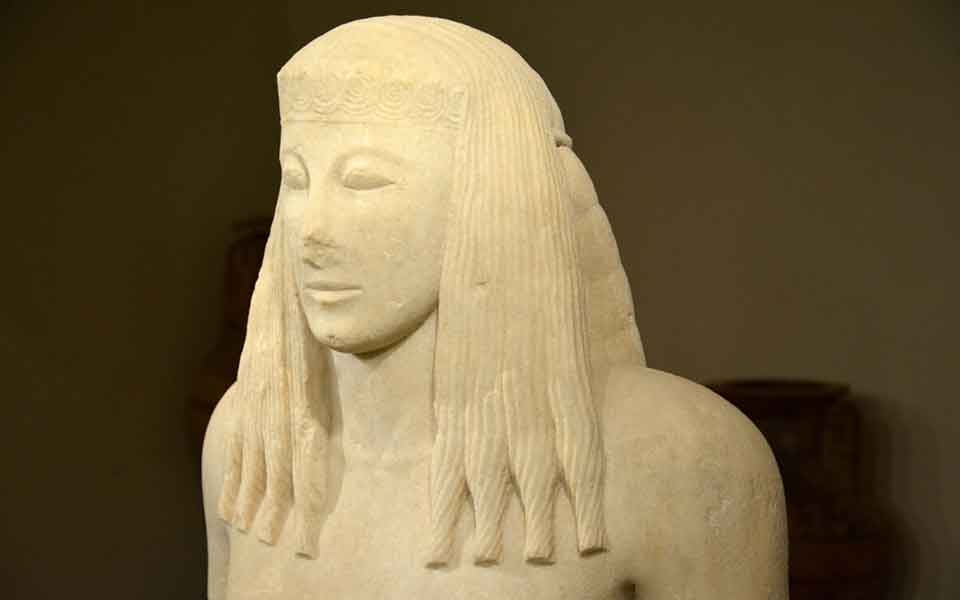A colossal marble statue of an Archaic kore (“maiden”), found during excavations at the necropolis of ancient Thera, has been unveiled at a new temporary exhibition at the Archaeological Museum of Thera in Fira, Santorini.
Dubbed the “Kore of Thera,” the nearly two and a half meter-tall statue came to light in November 2000, during rescue excavations by local archaeologist Charalambos Sigalas, near the village of Kamari.
Depicted wearing a long Doric peplos, a characteristic body-length garment, and made of Naxian marble, the 7th century BC statue is almost entirely intact, missing only the tip of its nose and the arm of the bent right hand resting on its chest. Archaeologists have hailed it as an exceptionally rare masterpiece of Greek art from the Archaic period (ca. 800-480 BC).
The kore now features as the star attraction of a new temporary exhibition at the Archaeological Museum of Thera, which is currently undergoing renovation works. Prior to its formal unveiling by the Minister of Culture and Sports Lina Mendoni, on September 4, attended by the President of the Hellenic Republic, Katerina Sakellaropoulou, the statue had been kept in the museum’s storerooms for 22 years.
“Despite the museum being under renovation, the time has come to hand over [the kore] primarily to the people of Thera and of course to the island’s visitors,” the Minster said in her speech.

© Hellenic Ministry of Culture and Sports

Many scholars have long believed that kourai (plural of kore), and their more common male counterparts, kouroi (plural of kouros), which were always depicted in the nude, represented the Archaic ideal of youthful beauty. Others theorize that they represent deities. All are depicted with the mysterious “Archaic smile,” which some have interpreted as a reflection of good health and well-being.
Both kourai and kouroi were used as grave markers in the Archaic and early Classical periods, or as votive offerings at temples and sanctuaries. Many kourai are depicted with outstretched arms, offering gifts of fruit, flowers, or birds to deities or to the dead. Famous examples include the Nikandre Kore, from the mid-7th century BC, found at the Sanctuary of Artemis on Delos, and the mid to late-6th century Peplos Kore, recovered during excavations on the Athenian Acropolis.
The exceptionally well-preserved “Kore of Thera,” discovered in the cemetery of ancient Thera, is believed to have functioned as a grave marker for a member of the island’s aristocracy. Found in the supine position, next to the ancient stone-paved road crossing that linked the necropolis to the city, it was one of many kourai excavated at the cemetery, but the only one to have been preserved nearly intact. The sheer number of funerary statues indicate the economic prosperity of the island at the time, and the elite’s desire to conspicuously promote their own wealth and status.
The ongoing renovation works at the Archaeological Museum of Thera in Fira are expected to be completed next year. In the meantime, the temporary exhibition of the statue, organized by the Ephorate of Antiquities of the Cyclades, will enable locals and visitors to admire this masterpiece of early Greek art.












